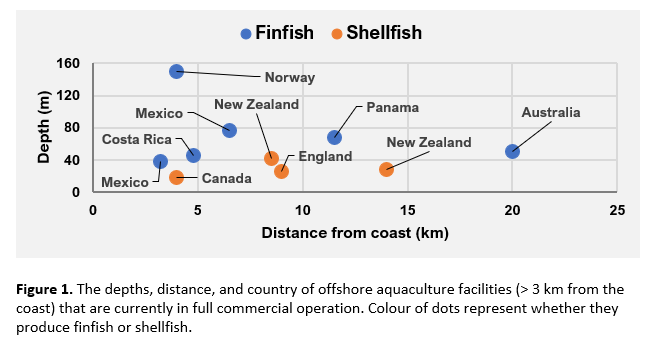THE POTENTIAL OPPORTUNITIES AND BARRIERS FACING OFFSHORE AQUACULTURE
The development of offshore aquaculture is rapidly gaining momentum in many countries around the world. This is because offshore aquaculture may potentially provide higher production levels while avoiding some of the environmental issues and conflicts currently facing the coastal aquaculture industry. In this presentation, we review the current global status of offshore aquaculture, its potential opportunities for expansion, and its potential barriers.
The term ‘offshore aquaculture’ currently lacks a standard definition and is used to describe a variety of operations in a wide range of depths and distances from the coast. When experimental offshore farms are excluded, there are only 10 operations around the globe that are in full commercial production and located further than 3 km from the coast (Figure 1).
Irrespective of the technological challenges of offshore commercial aquaculture, we find that regulatory uncertainty is likely a major barrier to the development and expansion of offshore aquaculture in several countries around the world. This is particularly true for countries like Canada and the USA, where there is ongoing: development of federal offshore aquaculture policies; confusion between multiple Federal and State / Provincial Governments; and ambiguity in jurisdictional borders. Such regulatory uncertainty may act as a deterrent to any investors considering developing offshore aquaculture in these countries.
